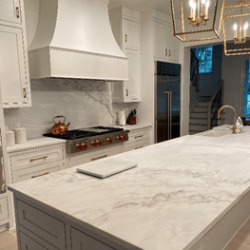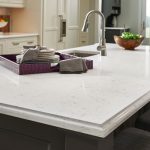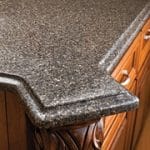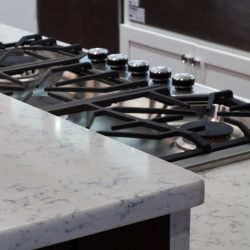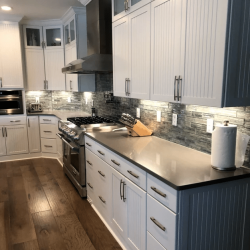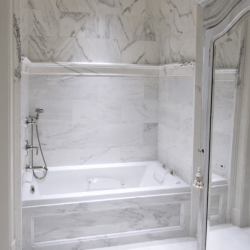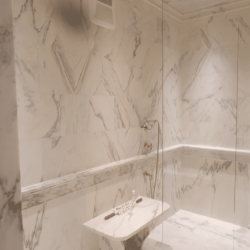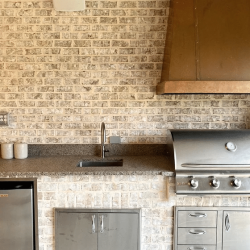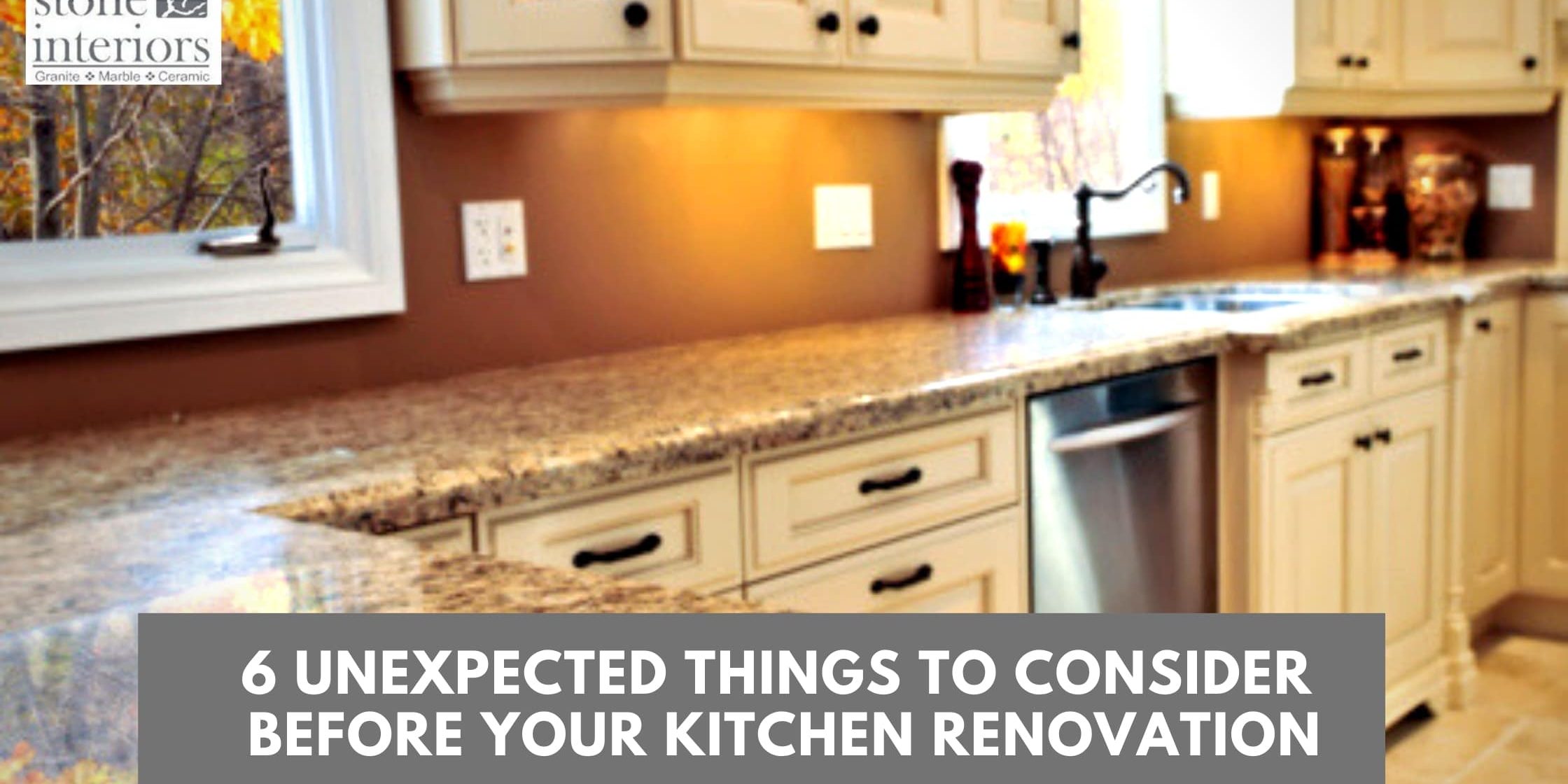But before you get ahead of yourself, here are 6 things to consider while you’re still in the planning stage, to ensure your new cabinets and countertop are perfect for the space.
1. The size of your doorway might impact your dream countertop.
This includes the width and height of doors, hallways, shapes of stairwells, and any other steps or entry ways along the route from your driveway to the kitchen. Narrow entryways could mean that larger islands need to be fabricated using multiple slabs and then seamed together.
2. The weight of the material you choose could limit the size of your countertops.
Certain materials weigh more per square foot than others, so the size of an individual slab slab could vary. The strength of the material can also affect how large each piece can be without risking breakage during transportation and installation. Partner with your countertop fabricator in advance when selecting your material, so you know exactly how large the slab can be, and approximately how many seams will be required to complete your project.
3. When designing your kitchen island, consider seam locations.
You or your kitchen designer can contact your countertop fabricator during the cabinet design process to discuss the number and location of seams. You should also address your sink location early on in the process. If you know where you want your under-mount sink cutout to be, you can plan seams and cabinets accordingly.
4. Consult your fabricator before installing backsplash.

Walls are rarely square. This means you could have a small gap between the back of your countertop and your wall. To give your project a finished appearance, this gap can be concealed by installing the right type of backsplash.
You may want to purchase backsplash in the same material as your new countertop for a clean, modern look. Typically, this is a 4” high backsplash for new construction and 5” for remodels (or 1” higher than the original backsplash). There will still be a gap between this vertical backsplash and the wall, but it is far less noticeable after you fill it with paintable caulk.
You can also purchase a tile backsplash; just make sure that it is installed by an experienced installer who can “float” your tile out from the wall rather than following the curves. This ensures that your backsplash will be level, and will extend out far enough to completely cover the gap between your wall and countertop. Buy trim pieces for the sides of your tile backsplash for a polished look.
5. If you’re keeping your cabinets, your existing countertop could be hiding something.
If your current countertops overlap the cabinets (as is often the case with laminate or tile countertops), you may have a strip of un-stained or un-painted wood underneath that will show when your new stone countertop is installed. You can correct this by installing wood trim pieces.
6. Prepare to discover un-level cabinets.
Make sure you are working with a stone fabricator who laser measures your cabinets. As long as your cabinets are not out of level by more than 3/8”, they should have no problem installing countertops on your existing cabinets. Your fabricator may just need to install shims between your new countertop and your cabinetry and silicone along the edge of the gaps to keep it looking polished. Again, plan to purchase some type of trim (typically a wood molding strip) to cover any gaps.
If your cabinets are more than 3/8” out of level, then you will have to contact a cabinet builder who can level them out. Otherwise, you would not be satisfied with the end look and durability of your new countertops. There would potentially be excessive lippage at the seams (one top higher than the other). Plus, countertops that are not properly supported can be more susceptible to cracks over time.
When home owners are planning a new kitchen design, they often wait until later in the process to partner with a stone fabrication shop. But there are so many factors to consider when installing new countertops and kitchen islands: in order to put together a realistic budget, we recommend that you work with a stone fabricator you trust early on in the process, so you can take everything into consideration. If you’re working with reliable professionals to guide you, you can actually start enjoying the renovation process!





